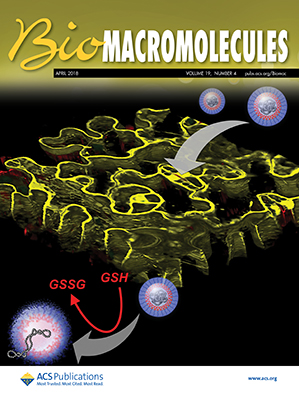Impact of Molecular Crowding on Accessibility of Telomeric Overhangs Forming Multiple G‑Quadruplexes
IF 5.5
2区 化学
Q1 BIOCHEMISTRY & MOLECULAR BIOLOGY
引用次数: 0
Abstract
Molecular crowdinga defining feature of the cellular environmentaffects folding kinetics, conformation, and stability of G-quadruplex (GQ) structures. However, its influence on the overall architecture and accessibility of telomeric overhangs containing multiple GQs remains largely unexplored. In this study, we employed single-molecule FRET and FRET-PAINT to address this question. We examined the accessibility of telomeric overhangs, capable of forming 1–6 GQs, to a short complementary peptide nucleic acid (PNA) imager probe in the presence of 200 and 6000 Da polyethylene glycol (PEG) molecules (PEG-200 and PEG-6000). We observed a progressive compaction and architectural condensation of the overhang as PEG concentration increased. At 30% concentration, this compaction was accompanied by approximately 3-fold and 8-fold reduction in probe accessibility in PEG-200 and PEG-6000, respectively. These findings offer new insights into how the crowded cellular environment may compact telomeric overhangs and modulate their structural and functional properties.
- Download: Download high-res image (79KB)
- Download: Download full-size image
分子拥挤对形成多个g -四联体的端粒悬垂可及性的影响。
分子拥挤──细胞环境的一个决定性特征──影响g -四重体(GQ)结构的折叠动力学、构象和稳定性。然而,它对包含多个gq的端粒悬垂的整体结构和可及性的影响在很大程度上仍未被探索。在本研究中,我们采用单分子FRET和FRET- paint来解决这个问题。我们检测了能够形成1-6个gq的端粒悬垂在200和6000 Da聚乙二醇(PEG-200和PEG-6000)存在下对短互补肽核酸(PNA)成象探针的可及性。随着聚乙二醇浓度的增加,我们观察到悬垂的逐渐压实和建筑凝结。在30%的浓度下,这种压实会导致PEG-200和PEG-6000的探针可达性分别降低约3倍和8倍。这些发现为拥挤的细胞环境如何压缩端粒悬垂并调节其结构和功能特性提供了新的见解。
本文章由计算机程序翻译,如有差异,请以英文原文为准。
求助全文
约1分钟内获得全文
求助全文
来源期刊

Biomacromolecules
化学-高分子科学
CiteScore
10.60
自引率
4.80%
发文量
417
审稿时长
1.6 months
期刊介绍:
Biomacromolecules is a leading forum for the dissemination of cutting-edge research at the interface of polymer science and biology. Submissions to Biomacromolecules should contain strong elements of innovation in terms of macromolecular design, synthesis and characterization, or in the application of polymer materials to biology and medicine.
Topics covered by Biomacromolecules include, but are not exclusively limited to: sustainable polymers, polymers based on natural and renewable resources, degradable polymers, polymer conjugates, polymeric drugs, polymers in biocatalysis, biomacromolecular assembly, biomimetic polymers, polymer-biomineral hybrids, biomimetic-polymer processing, polymer recycling, bioactive polymer surfaces, original polymer design for biomedical applications such as immunotherapy, drug delivery, gene delivery, antimicrobial applications, diagnostic imaging and biosensing, polymers in tissue engineering and regenerative medicine, polymeric scaffolds and hydrogels for cell culture and delivery.
 求助内容:
求助内容: 应助结果提醒方式:
应助结果提醒方式:


